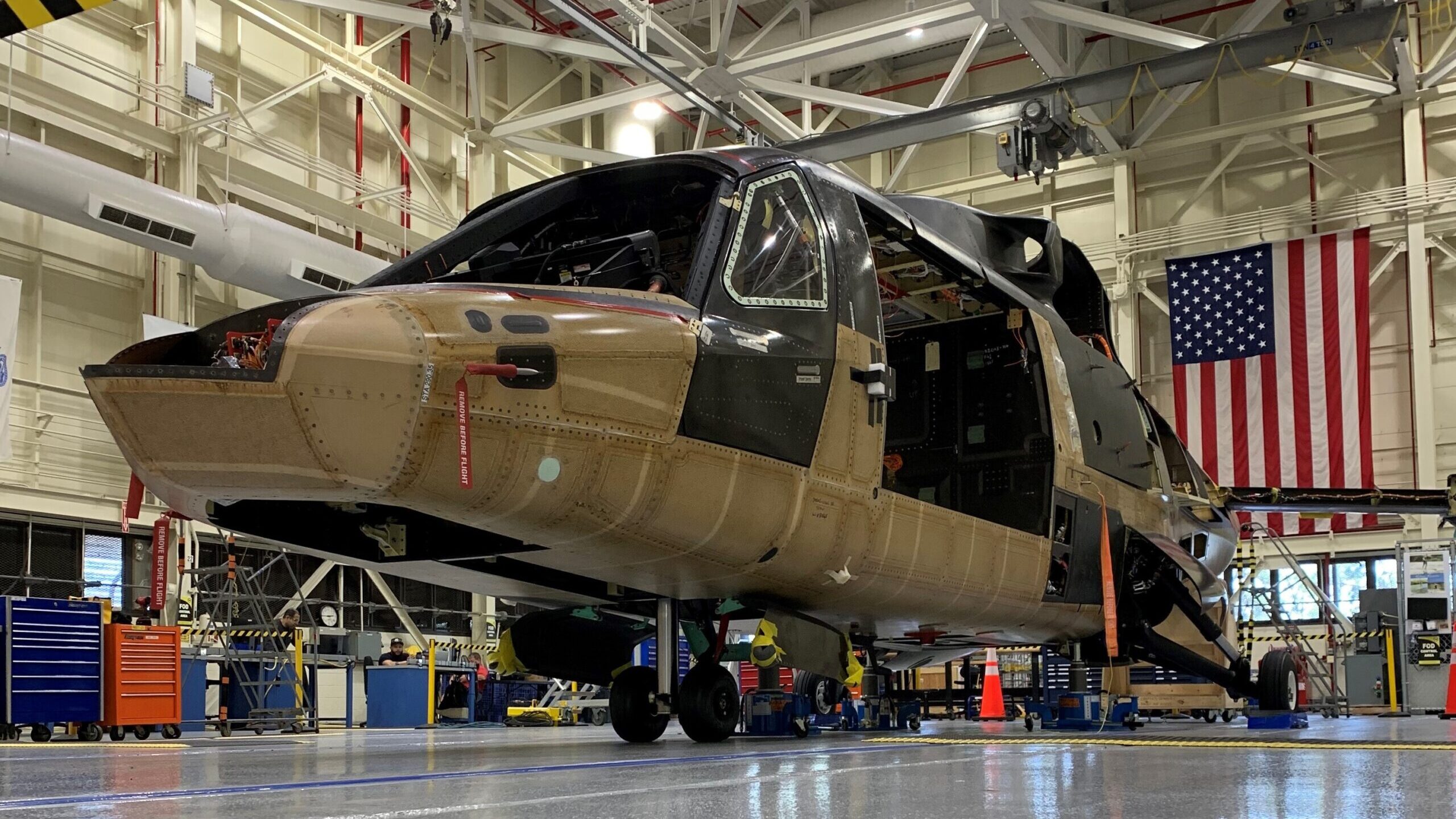
Sikorsky’s FARA Competitive Prototype, RAIDER X®, is seen at the Sikorsky Development Flight Center in West Palm Beach, Florida in March 2022. Photo courtesy Sikorsky, a Lockheed Martin company. (Courtesy of Lockheed Martin Sikorsky)
AAAA: Lockheed Martin Sikorsky’s competitive prototype for the Army’s Future Attack Reconnaissance Aircraft is now 85% complete, the company said as it revealed the first photos of the bird at its West Palm Beach, Fla. facility. The company also said it has built a second fuselage to enhance testing as the competition continues.
Sikorsky is competing with Bell Textron for the Army’s future scout helicopter program, expected to be decided early in fiscal 2024. The FARA contract is one of two rotorcraft that the Army is pursuing under is 31+4 modernization programs.
RELATED: The distant objective: Focusing FLRAA where it matters
At a briefing with reporters at the Army Aviation Association of America conference on Monday, Jay Macklin, Sikorsky’s director for Army future vertical lift and innovations strategy and business development, told reporters that the company had penciled in the aircraft’s first flight for the third quarter of fiscal 2023. Bell, which recently said its prototype is 80% complete, plans to fly its FARA prototype early next year.
Macklin told reporters that Sikorsky’s FARA offering was now “weight on wheels” and had installed the landing gear. He added that the company has also begun powering the aircraft and was in the middle system test acceptance procedures.
The company sees “a lot of progress being made,” Macklin said.
Sikorsky’s FARA offering is based on its S-97 Raider, which is about 80% the size of the competitive prototype.
RELATED: Bell plans factory of the future with FARA, FLRAA dreams
That leaves both competitors awaiting delivery of the Improved Turbine Engine Program, a General Electric engine that will power FARA and integrate onto Black Hawks and Apaches. While Sikorsky waits for the ITEP engine to be delivered — expected in November now, according to Army officials — it will use the down time to increase risk reduction, Macklin said.
A key aspect of that effort will be the second competitive prototype fuselage, Macklin said. He said the fuselage will be used to validate the flight and ground loads capability of the airframe and enhance safety testing. The second fuselage allows the competitive prototype, or CP, to focus on flying, while the fuselage can be used for testing.
The second fuselage is “really going to support our flight safety test program for the competitive prototype and provide data that feeds information into [it] as we build the the CP that’s going to fly,” Macklin told reporters. “So it’s another tool, we have to reduce risk.”
Bell is also exploring risk reduction as it awaits ITEP, and both competitors are also using the extra time to plan out what their Increment One design will look like should they win the contract. With the S-97 Raider, the second fuselage and its competitive prototype, Sikorsky officials said they believe they are putting themselves in a good position.
“As all programs move through their process, and you know, things move all around, we feel like this is the best way to reduce risk to provide an absolutely low risk solution for that increment one design,” Macklin said.
The FARA competition’s down select is slated for FY24 with first delivery slated for the end of the decade. The Sikorsky’s competitive prototype is being built in West Palm Beach, Fla.






















